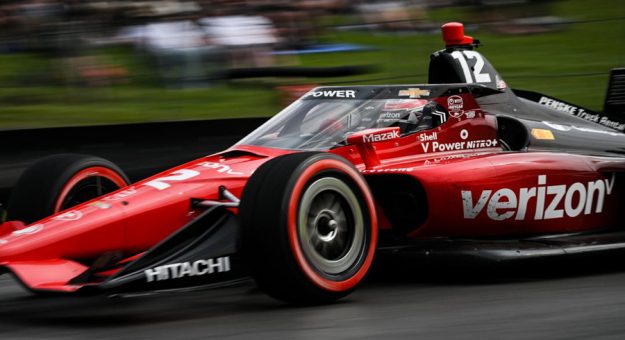MOORSEVILLE, N.C. — The hybrid era of IndyCar moved one step closer as six-time NTT IndyCar Series champion Scott Dixon and two-time IndyCar champion Will Power completed an extensive two-day test at Sebring Raceway.
It was the first time the 2.2-liter, twin-turbocharged V-6 engines were paired with the hybrid components on the track. The powerplant is unique to IndyCar, with a hybrid unit small enough to fit inside the bell housing.
The development of the 2024 engine package continues in a unique, collaborative effort between Chevrolet and Honda. The sound coming from the race cars is unchanged.
“For both manufacturers — I know for Honda — it’s a huge push to be relative to what they produce in their road cars,” Dixon said. “This will bring in new technology that will trickle down. Much lighter, compact units, which will be better for the future. It’s all about efficiency, to have less emissions and make it better for road cars.
“Even what IndyCar has done with their partners like Shell (100 percent Renewable Race Fuel) — all of this is heading in the right direction for the future.”
Power drove the No. 22 Team Penske Chevrolet and six-time series champion Scott Dixon was behind the wheel of the No. 93 Chip Ganassi Racing Honda. Both drivers used the eight-turn, 1.7-mile “short course” at Sebring with each turning 800 laps and approximately 1,400 miles on the engine package that will begin competition in 2024.
The deployment of extra horsepower, which simulates the current IndyCar overtake (“push-to-pass”) system, came after the hybrid units were regenerated under braking elsewhere on the track. Manual and automatic regeneration techniques were tested.
The new hybrid technology will provide up to an additional 150 horsepower.
“I’m always excited to try something new,” Power said. “I’ve been a big part of the testing of the new hybrid — running on the Indianapolis Motor Speedway road course without regeneration power like we’re running here. It’s going very smoothly. We’ve had no issues, and now we’ve added the regen to the power side of it. Everything is going as the engineers expected.”
Both drivers turned laps in 90-degree temperatures with high humidity, further stressing the new components. Both days also had the typical afternoon rainstorms that high Florida this time of year.
Dixon has helped to develop the 2024 powerplant since 2022, with extensive testing behind the wheel.
“The ground floor is not always what it’s cracked up to be,” Dixon said with a laugh. “You come to some test days — especially at the start — and you sit around and try to figure out what’s next and understand what improvements need to be made. You did very few miles then.
“Today is when you come in and run 600 miles on a street course or a road course, which is pretty hefty. It’s in a great phase now. It will change the strategy, especially if you have to regen and you’re being attacked and it’s going to be hard to regen. It’s going to add a different dynamic.
“Not only from a strategy but for the person in the seat. You have to be thinking pretty quickly and making the right decision at the right time, which will make the racing even more spicy, which will be pretty cool.”
Teams and drivers already are discussing how the added horsepower and efficiency of the hybrid units will affect race strategy and planning. Testing will continue throughout the fall and winter.
“A lot of things to be decided, but ultimately you can have more power all of the time, which would be good,” Power said. “We all love more horsepower. I think you want the most regen that you can have and use the engine to its max. It’s exciting.”
